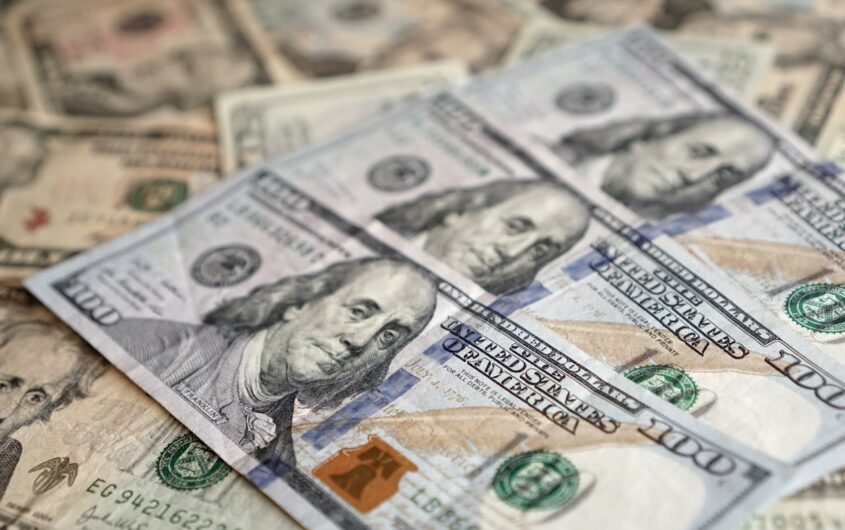
Dave Garcia via Pexels
No Alternatives to the U.S. Dollar?

Jörn Quitzau
Bergos AG
Joern Quitzau is a Geoeconomics Non-Resident Senior Fellow at AGI. He is Chief Economist at Bergos, a private bank based in Switzerland. He specializes in economic trend research and economic policy. Joern Quitzau hosts two Economics podcasts.
Prior to his position at Bergos, Joern Quitzau worked for Berenberg in Hamburg (2007-2024) and Deutsche Bank Research in Frankfurt (2000-2006) with a special focus on tax and fiscal policy.
Dr. Quitzau (PhD, University of Hamburg) was a Visiting Fellow at AGI in April 2014 and September 2022 and an American-German Situation Room Fellow in April 2018.
The U.S. dollar exchange rate has been under pressure for much of the current year. Although the U.S. currency has recently gained some ground against the euro, the euro has risen by around 13 percent against the U.S. dollar since the beginning of the year. The weakness of the dollar is closely linked to the economic policy of the U.S. government. President Donald Trump wants a weaker dollar and has clearly succeeded in reducing its attractiveness.
At the international level, however, doubts are spreading about the long-term role of the U.S. dollar in the global monetary system. The erratic U.S. trade policy, Trump’s attacks on the independence of the Federal Reserve, and the use of the dollar as a sanctioning tool in geopolitical conflicts are causing unease among many observers and investors. Speculation about forcing foreign bondholders to convert their debt into very long-term government bonds (Mar-a-Lago Accord) is also unhelpful.
U.S. dollar continues to be highly significant
Market players are consequently looking for alternatives to the dollar. Central banks have diversified their foreign exchange reserves somewhat more. They have bought gold to reduce their dependence on the dollar. They have also increased their holdings of smaller currencies. The euro has not benefited from this so far. Its share of global foreign exchange reserves remains at only 20 percent. Chinese renminbi account for an extremely small share of currency reserves. As a result, despite all the diversification, the share of the U.S. dollar has fallen only slightly in recent years and still stands at around 58 percent.
The fact that the U.S. dollar has been able to defend its dominance quite well so far is due to the requirements that a global currency must meet. These include an independent central bank that not only ensures stable prices but also the stability of the financial markets and a large liquid bond market where foreign exchange reserves can be invested. Broad acceptance of the currency as a means of payment and a high degree of legal certainty are additional factors.
The U.S. dollar benefits greatly from the fact that there is no serious alternative in terms of liquidity, security, and profitability. However, a currency also thrives on trust. And this is where the U.S. government’s policies have raised doubts. But as is so often the case, it is not about absolute trust in a currency, but relative trust. Specifically, the question is: How trustworthy is the U.S. dollar compared to the existing alternatives?
It turns out that the other major currencies do not have a clean slate either. The U.S. dollar has therefore rightly enjoyed greater trust than its competitors to date. This is particularly true in comparison to the Chinese yuan. Who would want to keep their currency reserves in an autocratic country that regulates capital movements and does not guarantee convertibility? Japan has the oldest population in the world and, in terms of economic output, has around twice as much government debt as the United States. This is only sustainable because the Japanese central bank has purchased a large proportion of government bonds, keeping interest rates close to 0 percent.
The euro has design flaws
Design flaws keep cropping up in the eurozone, undermining confidence in the monetary union. Currently, all eyes are on France. The country is suffering from high public debt and a fragmented political landscape. It is unable to form a stable government capable of organizing fiscal consolidation. This poses a latent threat of a new euro crisis. In addition, the European bond market is highly fragmented. There are hardly any common bonds at the EU level (“Eurobonds”). Instead, the European market is dominated by bonds issued by individual countries. Instead, the European market is dominated by bonds issued by individual countries. This makes the euro less attractive as a reserve currency. From a geopolitical perspective, the outlook for the eurozone also deteriorated after Russia’s war of aggression against Ukraine.
Does high government debt jeopardize the “safe haven” status?
U.S. government bonds are the anchor of security in the global monetary system. If the U.S. debt ratio continues to rise, investors could increasingly question the currency’s safe haven function. However, many other countries are not in a much better position when it comes to public finances. In addition, many other industrialized nations have high levels of debt but significantly lower growth momentum. Without dynamic growth, consolidating public finances is much more difficult.
Thanks to its position in the global financial system, the U.S. currency has another advantage: America is too big and too interconnected to fail. If international investors refused to finance budget deficits and plunged the United States into a debt crisis, contagion effects of unprecedented magnitude would be very likely. However, if the alternatives to the dollar are swept away in the event of a debt tsunami originating in the United States, diversification offers only a certain degree of false security. In this respect, it is rational for investors to remain invested in U.S. treasuries.
Crypto assets as an alternative?
Technological developments can drive changes in the monetary system. Bitcoin may be popular with Donald Trump, as his order for a “strategic Bitcoin reserve” showed. However, Bitcoin is not suitable as a reserve currency because it is too volatile. National currency reserves should be seen as a contingency fund that can be used in the event of payment bottlenecks and must therefore retain its value even in times of crisis. In addition, Bitcoin is not as unique as its proponents claim.
The U.S. government is promoting digital stablecoins that are pegged to the U.S. dollar and can be used as a low-cost means of payment for transactions. For the United States, stablecoins have the advantage that their value is backed by the purchase of U.S. government bonds, thereby generating additional demand for US government bonds. They do not pose a threat to the dollar’s supremacy; rather, they help to stabilize it.
Outlook
Measures to reduce dependence on the dollar will continue. Efforts will be made to establish international payment systems, strengthen independence through digital central bank money, and diversify foreign exchange reserves more widely. However, all of this takes time. The U.S. dollar remains indispensable for the time being. It is to be hoped that the United States will not damage the dollar recklessly.
This article is based on a German-language article in the Frankfurter Allgemeine Zeitung from Michael Heise and Jörn Quitzau: “Weltwährungssystem: Der Dollar bleibt der Anker“







